The Politics of Fashion
When actions speak louder than clothes.

From the unveiling of of the heftiest and buzziest magazine issues of the year to the gathering of the most glamorous designers, models, and tastemakers around the newest collections of the season, September is a big time for Big Fashion. We’re experiencing the grandiosity right now, with a reinvigorated, largely in-person show calendar taking place in New York, London, Milan, and Paris after a touch-and-go hybrid of intimate shows and digital presentations over the past 18 months.
What comes down these runways will be splayed all across social media and eventually trickle down to our closets—cue Miranda’s “cerulean” monologue from The Devil Wears Prada—proving that, whether you follow it or not, fashion is unavoidable. But its omnipresence and characterization as a sparkling, luxurious tool in self-expression eclipses the darker side of the industry: low wages, waste, environmental degradation.
For instance, approximately 85 percent of garment workers in Los Angeles have experienced wage theft, including wages as low as $5 per hour. Brands including Forever 21, Fashion Nova, Urban Outfitters, and Charlotte Russe have used these factories in their supply chains, according to the Garment Worker Center. In terms of textiles, less than 1 percent of material collected for recycling is used to make clothing, and clothes with non-biodegradable fabrics will sit in landfills for up to 200 years. These facts are less palatable than, say, pastels being “in” for fall, but facing these unsightly truths is more urgent than ever. According to the Ellen MacArthur Foundation, if we continue on this same path for the next 30 years, fashion will account for a quarter of the world’s entire carbon budget. While pointing fingers at consumer behavior and corporate responsibility (or lack thereof) is valid, change cannot begin and end there.
When it comes to industry standards around labor practices and the environmental implications of fashion, it is evident that government must play some role in dealing with privately owned fashion businesses. But how can fashion and politics intersect beyond just discussing what political figures are wearing? The answer is policy.
We talked to seven women pushing for (and making!) major change in the fashion industry. Updating codes of green-centric marketing, demanding garment worker protections, and understanding the effects of overproduction—these are just a few of the critical actions they’re taking. Here, they share their advice, expertise, and best practices for becoming a conscientious consumer who still looks and feels fabulous.
On Understanding the Implications of the Fashion Industry

Ayesha Barenblat, founder and CEO of Remake
As a first-generation Pakistani immigrant, Ayesha Barenblat is “deeply connected to the women who make our clothes.” She marks the deadly collapse of the Rana Plaza factory in 2013 as the breaking point for the industry and herself. So in 2015 she started Remake, an organization providing information and resources about the fashion industry’s implications for the environment and humanity.
“[There is this] dichotomy of the glitz and glamour of New York Fashion Week and the beauty of fashion magazines with the underbelly, which is so ugly. How is it that this very profitable, multi-trillion-dollar industry makes clothes in this way? This way that is so deeply polluting, so decimating of communities and ravaging women of color.
Stay In The Know
Get exclusive access to fashion and beauty trends, hot-off-the-press celebrity news, and more.
What are your clothes saying about you? At Remake our slogan is ‘wear your values’ and the industry is saying ‘I don’t care about the climate crisis and I don’t care about women’s rights.’
The kinds of prices that a Forever 21 or Charlotte Russe pays is exactly why the factories rob the workers. The fast fashion brands are lobbying hard to take the brand liability piece out of this. Ultimately we as taxpayers are underwriting the theft of the brands.
People are seeing inequity seeping into their own lives. They’re also starting to see just how the lack of regulatory reform holds women back. And here’s an industry that is predominantly powered by women.
What we’re missing is the policy piece. Businesses from a voluntary standpoint can only do so much. [Individuals are] not just going to shop [their] way into a more sustainable future. If we are not going to practice that advocacy muscle, we’re going to get nowhere. You writing a postcard [to your legislators]—rather than buying the most sustainable, ethical wardrobe—could get 46,000 women at least to a minimum wage.
This is really all about community. Doing this alone, individually is difficult. Being an advocate or an activist is lonely work. [That's] why at Remake we have our ambassador program through which we are linking changemakers to people in their zip code. In the context of the U.S., a lot of policy is going to come at a state level, at a city level before we’re ready for the federal level.”
On Fashion and Plastic Pollution

Hannah Testa, founder of Hannah4Change
Eighteen-year-old Hannah Testa’s journey as an environmental activist stems from her love of animals and the natural world. Seeing the planet decimated by plastic pollution spurred the Vanderbilt University freshman to take a public stand with her platform Hannah4Change, which provides education about post-consumer plastics and promotes positive change, and through her book, Taking on the Plastics Crisis.
“Fashion intersects with many of the issues I care about when it comes to plastic, ocean conservation, and animal rights. Ninety-nine percent of all plastic is fossil-fuel based. It doesn’t ever break down. It breaks up into smaller pieces, but it doesn’t ever go away. So when you’re using [your clothing], [the microplastics from synthetic fibers] start to shed and break down. When we’re washing our clothes, [those microplastics are] going through the water system and they are so small, too small, to filter out in waste management, so it’s all ending up in our lakes, rivers, and oceans. Ultimately, that’s what’s going into our food chain, into the seafood that we’re eating and ending up in our own bodies. And we’re still learning what exactly that means for us.
I encourage people to stay away from [synthetics] whenever possible and try to find other [fabric] alternatives. My family and I love linen clothes and so that’s what we search for when we’re second-hand shopping. I’m like, ‘Mom, look! Linen!’ and she’s like, ‘Yes!’
When you don’t know where to start, I think the best place is education. Learn as much as you can about the issue and along the way you’ll learn about solutions and resources that are out there. And from there you can implement those changes in your daily life, your business, and brand model.
[As a brand] you are also a resource and outlet for your consumers. You don’t have to just focus on fashion, but [can] also be an informational source for people—show them good products and where they can support businesses that are doing good, and show them ways they can get involved, support policy. You can show people that you support them in this movement to become more [environmentally conscious] and sustainable, not [just] through your products, but through your mission, through your manufacturing, through your work with your own employees. It’s so important that you’re just authentic throughout your whole process and able to show your consumers how to tap in.”
On the Importance of Policy Against Greenwashing

Hilary Jochmans, founder of PoliticallyInFashion
After spending a dozen years as a senior staffer in both the House and the Senate, government affairs consultant Hilary Jochmans has made it her mission to convince the government of the need for a federal fashion czar. The role would oversee policy in the fashion industry, as well as the updating of the Federal Trade Commission’s Green Guides, which were introduced in 1992 but have not been updated in almost a decade. The FTC will be re-examining them in 2022.
“It’s not so much about making a value call as to what’s good and what’s bad, but consumers need to know what is [out] there and what their options are about what to purchase. That segues into the Green Guides—guidance for [brands] to make environmental claims and marketing claims about their products. If you put out something deceptive or that’s not true, that doesn’t benefit the consumer and it certainly doesn’t benefit the environment. And look, no one is 100 percent on any of these things, it’s a zero-sum game, everything is a trade-off, but I would say that the consumer needs to be able to make that decision [about buying conventionally made fashion] for themselves.
[Part of the job] of the Federal Trade Commission is to prevent unfair and deceptive practices, which is a really good start. Let’s make sure that any information that’s out there is accurate. Another policy is the creation of a fashion czar. For me, I see that as someone who can identify the problems and delegate it out to the appropriate places to be addressed in the government. Someone needs to make this macro plan or a queue list of things to go through. Like, what things can be done by the private sector? What can be done by consumer choice? What things do we need government intervention for? The private sector is great for fixing a lot of problems and there are a lot of companies that want to do the right thing and are willing to do it, but there are things that need to be set at the government level.
What I want to see happen is for the industry to engage with government on this. It’s the practitioners who can say it best. So we want fashion to have a seat at the table for any of these discussions going forward. This is moving. We’re seeing [that] environmental bills are moving, infrastructure bills are moving. There is a real interest in getting something done in Washington, why wouldn’t you want to engage and get your story out there?
Too often I think saying ‘talk to the government’ makes it seem like this big, scary thing. If you are a designer or manufacturer, go to your elected representatives. You are an employer in their district, this is a relationship you should develop. Members do want to hear what the issues are for their constituents. Build that relationship early and try not to go in when it’s a crisis; have that dialogue started so they can hear from you.”
On Incentivizing Corporations

Stephanie Benedetto, environmental policy consultant and founder of Queen of Raw
In 2018, Stephanie Benedetto launched Queen of Raw, a marketplace for dead stock, or new but unused textiles available to individuals and corporations, modeled after her great-grandfather’s repurposed textile business in New York. As a 2020 Cartier Women’s Initiative grant recipient, she is growing the brand into a resource to manage the textile waste crisis.
“This isn’t just about people and the planet—though this is the core to why we [run Queen of Raw]. This has to be economically profitable. I think that so often gets lost in the conversation.
Anyone can participate in our marketplace, you can be a student, maker, crafter, quilter, and can come buy and sell in our marketplace. You can also be the biggest brands and retailers in the world. We work from fast fashion to luxury. The idea is that, economically as sellers, you make some money on what otherwise would be wasted, burned, or sent to a landfill, and free up very costly warehouse space. And buyers, in turn, get access to high quality stuff that they never would otherwise with lower price points. Economically [buyers] are incentivized to get high quality goods at a discount located where and when they need it, away from [supply chain disruption] and they also have a sustainable story to tell.
So, how do we incentivize larger companies to minimize waste going forward? These are massive companies who have a big impact to drive real value for key stakeholders. We know fashion is really bad for people and the planet by some accounts. It’s the second biggest polluter in the world, just behind oil and agriculture, which it uses. But if you flip that statement, it also means that fashion and textiles literally have the power to solve the world’s water crisis if we rethink systems and how we do things. [Using deadstock], to me, is a big opportunity of how to do that.
The beauty of models like ours and ThredUp and The RealReal is that they are a place to start today and to take action. In our marketplace, we quantify the impact so that any consumer, individual, or corporation can see the amount of water and the carbon emissions that they save, as well as dollars, by the actions they take. Buying one yard of conventional cotton can save up to 700 gallons of water. One yard—one action by one person—and that’s enough clean water for someone to drink for three years. It’s a tiny act that every person can do and the sum is massive.
We get asked all the time why we’re not a non-profit. And I like that question because people automatically assume that doing good and sustainability is just good for people and the planet. I’m very much for-profit with a strong social mission. There is a ton of good I can do while also building a massively powerful and successful business that hopefully one day will get acquired and go public. But we do have a not-for-profit arm where we work with not-for-profits regularly to give them access to our marketplace, community, and technology, so we can help them make real money too.”
On Securing Minimum Wage for Domestic Garment Workers

María Elena Durazo represents California Senate District 24 in Los Angeles. She has been a driving force behind SB-62, a bill eliminating the piece-rate system of pay and demanding minimum wage for garment workers in the state, a hub for fashion production in the United States.
“Right after I got elected, I took a visit from a group of garment workers. They began to tell me story after story about how they were not getting paid for their work. Not ‘getting enough’ or a ‘living wage’ but they were just not getting paid. I didn’t want to believe it. They came prepared with four different policy changes they thought could make a difference as far as giving them the ability to get paid and enforce the law. We asked ‘what we can do to make the most significant [change]?’ and zeroed in on the issue of brand responsibility and the piece rate.
In my very first year, I chaired the budget committee that oversaw labor. There was another group that came to testify about how the fund that pays the garment workers when they don’t get paid [by their employer] was pretty much insolvent. We had to propose $7 million from our general fund tax dollars to foot the bill for the wage theft they were facing. These were claims that definitely had the evidence and it was decided [these workers] were owed money from their employers, but there was not even money left in the wage theft restitution fund. They had been waiting to get paid for several years. That first year really opened up my eyes to what’s happening on the ground. These are hard-working mostly women, mostly immigrant women. And they work! They’re not asking for even more, they’re just saying: Pay us for the hours that we work.
Then came the idea behind SB-62; we are very close to getting the support we need.
We created this ‘essential worker’ category that we had never recognized before even though there have been garment workers, truck drivers, grocery workers, and farm workers forever. But now we have finally accepted that they are essential to our economy and to our survival. When PPE and masks became so critical, garment workers still went to work to make them. It was very, very important to us to give that recognition [through this new designation]. There was this recognition within the industry that if you want to reduce risks and costs and have the product closer to home, our local supply was just absolutely critical to keeping that going; the realization that a strong domestic manufacturing base was so important and gave us an advantage.
Here in California, it’s supposed to be so progressive and so far ahead and yet we didn’t have those protections that the workers needed. We have several examples of shop after shop—and big shops, I’m not just talking about small, little places that did not have those protections, and shame on them for not having them. [Workers] didn’t have the soaps or masks for themselves as they were making them. They were really horrendous conditions.
All we’re trying to do is enforce the legal minimum wage. That’s not too much to ask for of any business, of any size. Making the brands responsible [rather than allowing them to pass it off to the factory owners] should also be a natural. Who's profiting from [the work] should be responsible for what those workers get paid. To get paid the minimum wage is asking the least. If a business cannot pay minimum wage, then maybe they shouldn’t be in business.
We’re facing a lot of issues with people who can’t afford housing but a piece of that is how much they get paid. If you have 45,000 workers and a significant number of them are not getting paid even minimum wage, what does that mean as far as their living conditions? Our neighborhoods? Our schools? It means there are too many people living in a single apartment because they can’t afford the rent of [an area] where children deserve to grow up. How does that affect the kids? There are so many things that get impacted when [these people] don’t get paid what they need.”
On Overproduction and Perpetuating Consumption
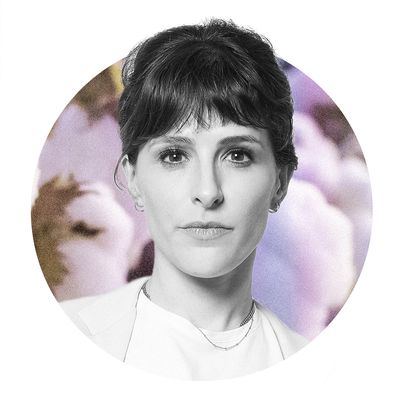
Maxine Bédat, author and founder of New Standard Institute
Maxine Bédat is the founder of New Standard Institute, a resource and advisory council on creating a cleaner and more equitable fashion industry, and author of the book, Unraveled: The Life and Death of A Garment, chronicling the steps of production and consumption of clothing from farming to its after-life.
“If you look at the cigarette industry, that [product] was literally addictive and we’ve managed to get that quite under control as a society. In studying of how that came to be, it wasn’t the pictures of the black scary lung on the cigarette packets, but it was when people realized that cigarette companies were duping them. People do not like to be duped. That is similarly what we can see in the fashion industry. We are being told to want all of these things and, yes, that taps into a very real, chemical thing in our brain. But so much of this is being manipulated. Our desire is being manipulated. To me, it’s been the most powerful thing to take back control from brand marketing and manipulation and be like, what is it that I actually like? What makes me feel good? And using that excess energy to then engage in reading about policy and learning, if that means becoming part of the New Standard Institute or signing a petition, showing up to a march. While dressing fabulously, by the way. None of this is inconsistent with having great style. It’s a way to own one’s own style and not have it be driven by a ton of marketing messages. [We need] to see ourselves not as consumers but as citizens.
I am very pleased to see that wearing second-hand is now considered ‘cool.’ But I think the one thing we should have our eyes wide open to is the moral hazard potential. Anecdotally, I think [resale] is fueling the whole industry to keep going because the people who are buying clothing new are saying ‘oh I can always just give it away, so I don’t have to feel bad about my frivolous purchase because somebody else is going to get a second life out of it.’ We have to be cautious of that and aware all the time of the bigger issue, which is: What is driving all of these desires to make all of these purchases regardless of where they’re coming from?
So much of what we think of as ‘style’ is conforming. But I think, in terms of a young designer who can really think about how a business can be sustainable using dead stock material, or, even better, one-off creations, and how can they make a successful business out of that—that is the most exciting area both creatively and what the future of fashion is going to look like. We’re all going to wear clothes, and I think we can celebrate creativity and support young designers, but I think we should all have our eyes open to what it is we’re actually doing.”
On the Importance of a United Fashion Front

Jennifer Fisher Clay, founder of Fisher Clay Group
Jennifer Fisher Clay is a social impact advisor and founder of the Fisher Clay Group, a strategic advisory firm helping creatives drive social impact. She has worked with the International Trade Administration to promote President Obama’s “Made in America” initiative.
“Policy doesn’t have to be punitive. There is a way for all of us to come together. It can be uplifting, it can be encouraging, and it can help companies drive toward the goals that they’ve probably already set. I don’t think there’s anything wrong in having a healthy partnership with the government.
No doubt the fashion industry plays a part in the social and environmental challenges of our times, so it should definitely play an active role in the solution. We’re starting to see more and more leaders in the industry take it upon themselves to address these challenges one step at a time. And then we see organizations and NGOs that are providing the educational resources and onboarding these companies to help them navigate [the issue] since sustainability is all new to us, right? We’re seeing corporate boards shift to stakeholder capitalism in which there is a true value to purpose, people, and planet. And [executives] are starting to understand it and how it impacts the bottom line.
We need a unified industry and a unified voice to come together and have these public, private, and government partnerships to really help shift the market forward. And let me say, really, the time is now. There are so many round tables, congressional caucuses, special committees in Congress, and they want to hear from industries and communities and from the public. So why not take this opportunity to be a part of these changes that are inevitable?
For change that is bound to happen, it is better to be in a position to shape it, than to be shaped by it.”
Click here to read the full Future Issue
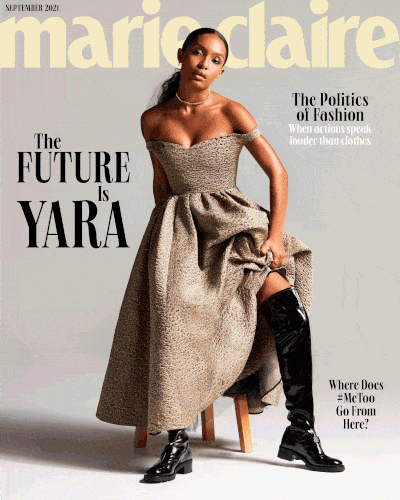
Julia Gall is the former Style Director at Marie Claire, covering all things fashion, as well as styling tips, wardrobe upkeep and sustainability. Check her out at @juliasgall.
-
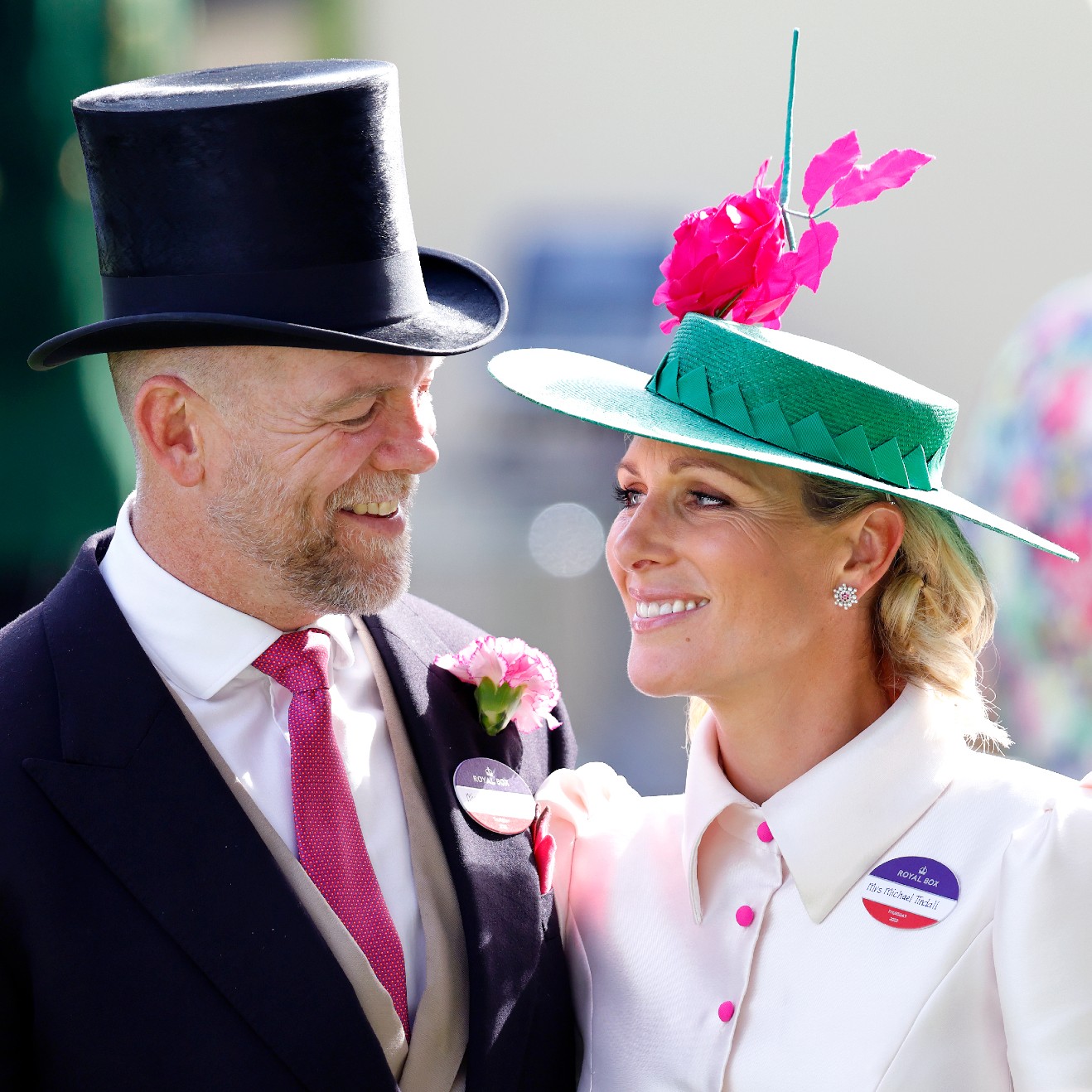 Princess Anne's Unexpected Suggestion About Mike Tindall's Nose
Princess Anne's Unexpected Suggestion About Mike Tindall's Nose"Princess Anne asked me if I'd have the surgery."
By Amy Mackelden Published
-
 Queen Elizabeth's "Disapproving" Royal Wedding Comment
Queen Elizabeth's "Disapproving" Royal Wedding CommentShe reportedly had lots of nice things to say, too.
By Amy Mackelden Published
-
 Palace Employees "Tried" to Get King Charles to "Slow Down"
Palace Employees "Tried" to Get King Charles to "Slow Down""Now he wants to do more and more and more. That's the problem."
By Amy Mackelden Published
-
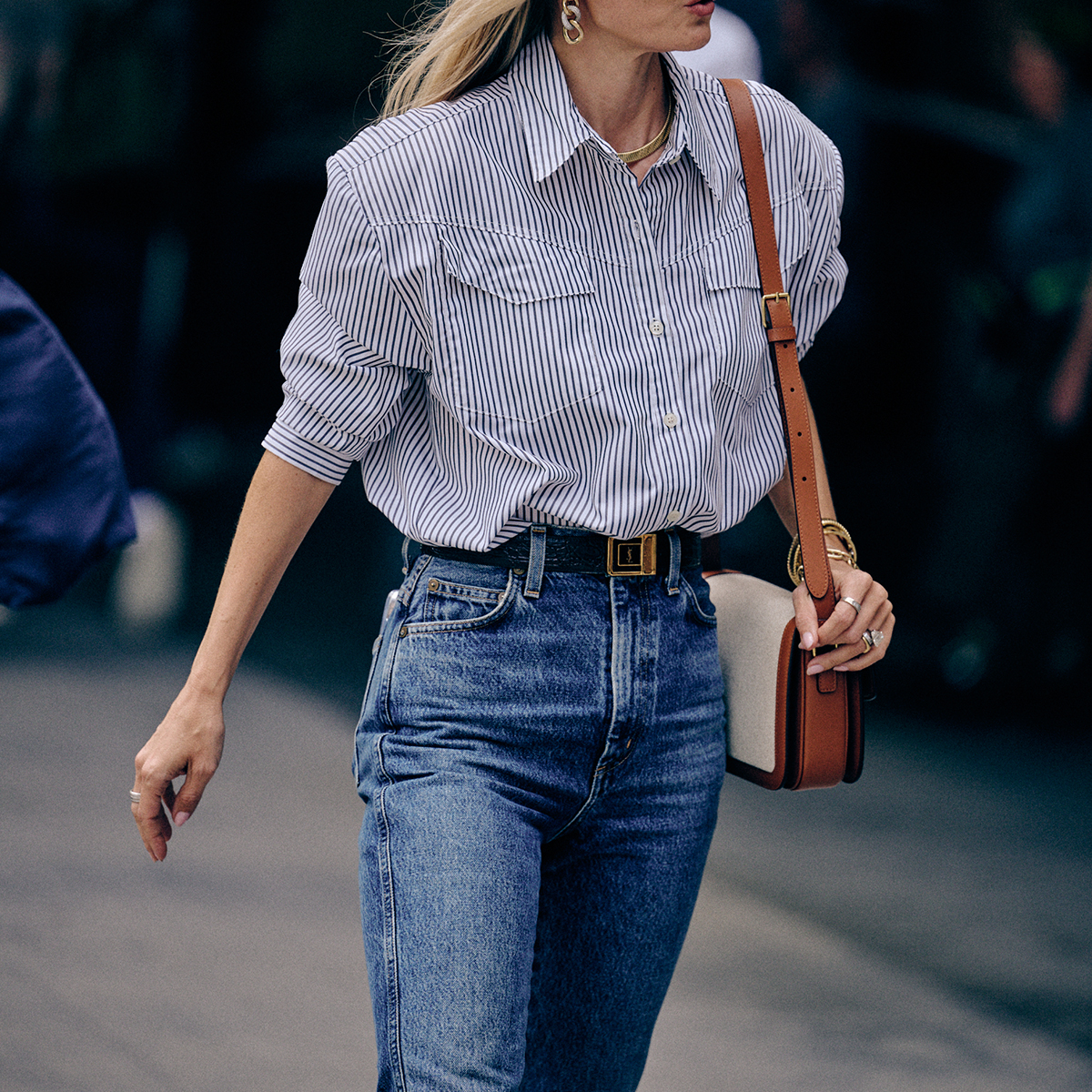 Trump's Tariff Chaos Forces Women-Led Brands to Strategize and Adapt—Fast
Trump's Tariff Chaos Forces Women-Led Brands to Strategize and Adapt—FastIndependent designers have the most to lose, and shoppers will feel the impact.
By Halie LeSavage Last updated
-
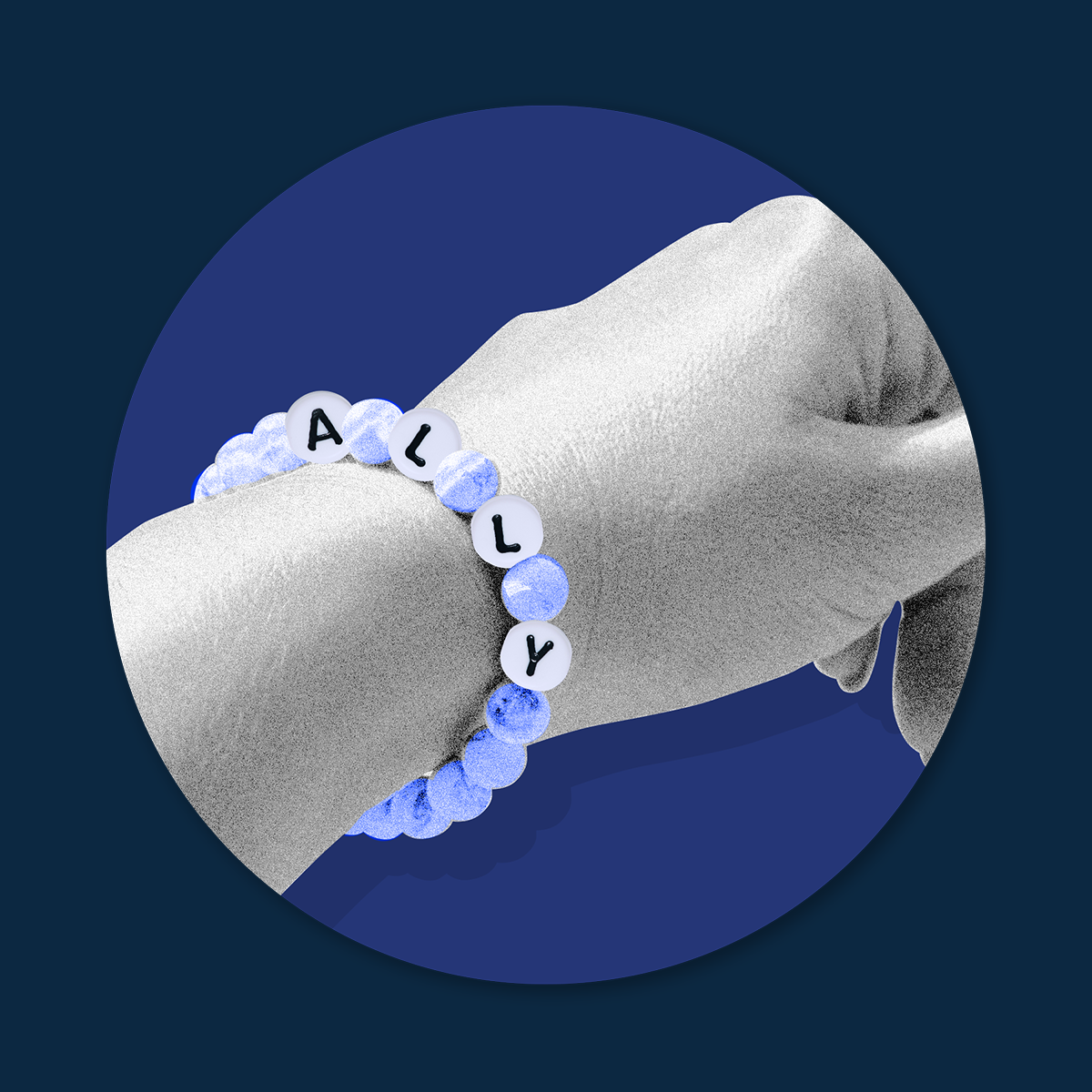 Please, We Don't Need Your Blue Bracelets
Please, We Don't Need Your Blue BraceletsAfter the 2024 election, TikTok creators crafted \201callyship\201d accessories to signal safety. Instead, these DIYs left marginalized voices feeling unseen.
By Maria Santa Poggi Published
-
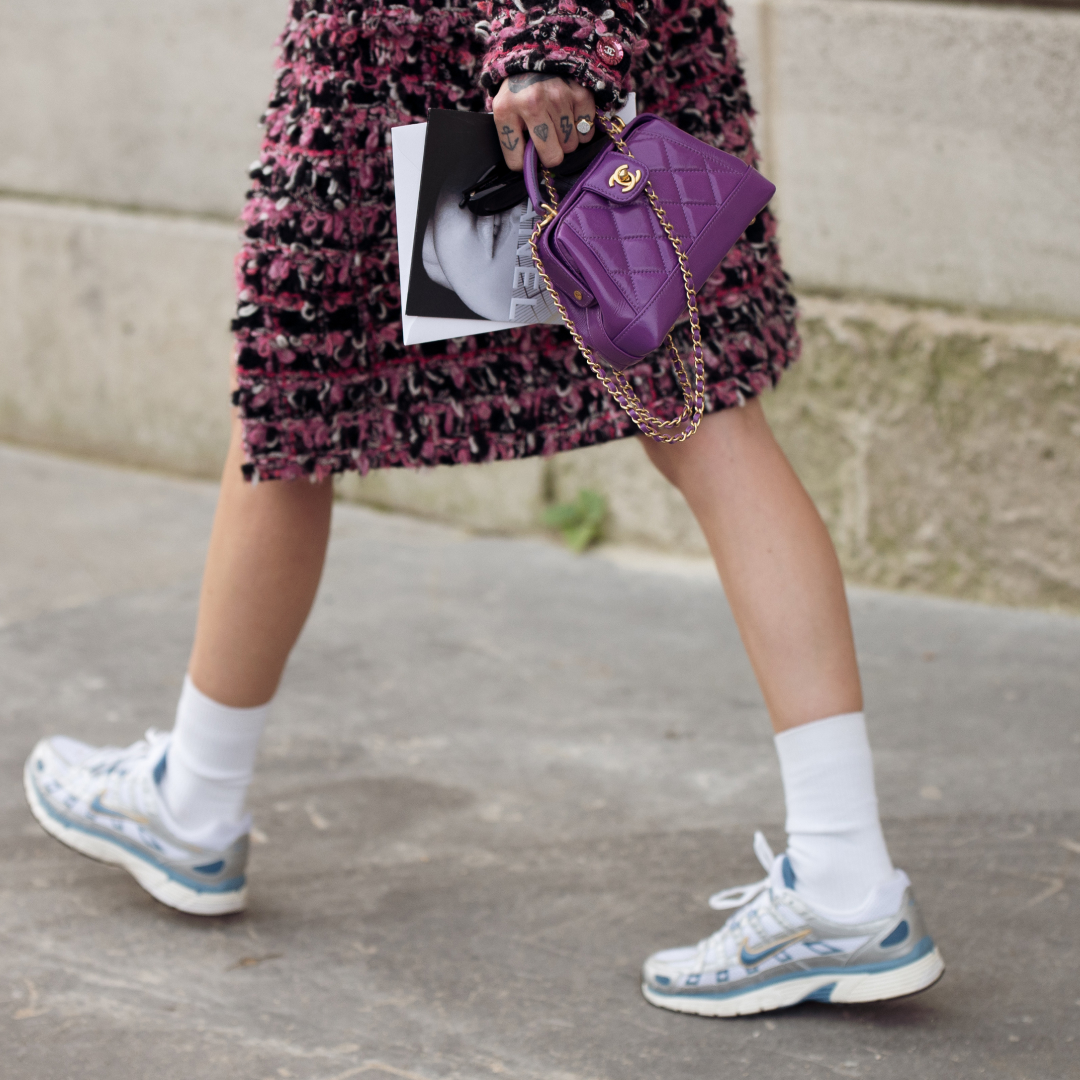 How Trump's Tariffs Will Affect Your Closet, Explained
How Trump's Tariffs Will Affect Your Closet, ExplainedPrepare for much higher prices.
By Halie LeSavage Last updated
-
 Kamala Harris Wears Dark Blue Power Suit to Accept the Democratic Presidential Nomination
Kamala Harris Wears Dark Blue Power Suit to Accept the Democratic Presidential NominationHer historic look was custom-designed by Chloé.
By Kelsey Stiegman Published
-
 All the Must-See Fashion Moments From the 2024 Democratic National Convention
All the Must-See Fashion Moments From the 2024 Democratic National ConventionFrom Kamala Harris’s "coconut tree" suit to Michelle Obama's futuristic power set.
By India Roby Last updated
-
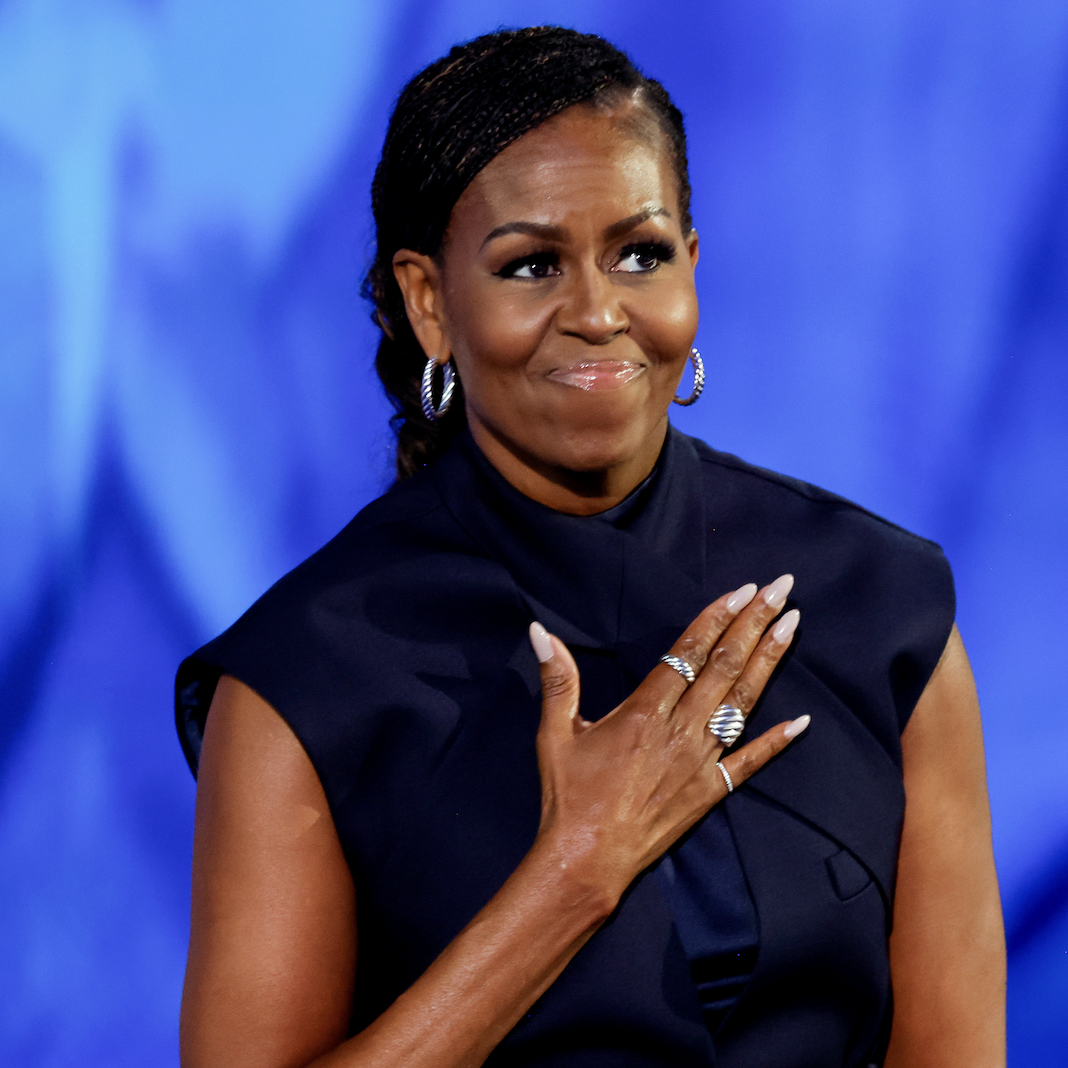 Michelle Obama's Futuristic DNC Pantsuit Represents Hope in the 2024 Election
Michelle Obama's Futuristic DNC Pantsuit Represents Hope in the 2024 Election"The exhilaration of once again being on the cusp of a brighter day," said the Former First Lady.
By Kelsey Stiegman Published
-
 Kamala Harris's 2024 DNC Outfit Is So Much More Than Just a Tan Suit
Kamala Harris's 2024 DNC Outfit Is So Much More Than Just a Tan SuitHer DNC look references both President Obama and "coconut trees."
By Kelsey Stiegman Last updated
-
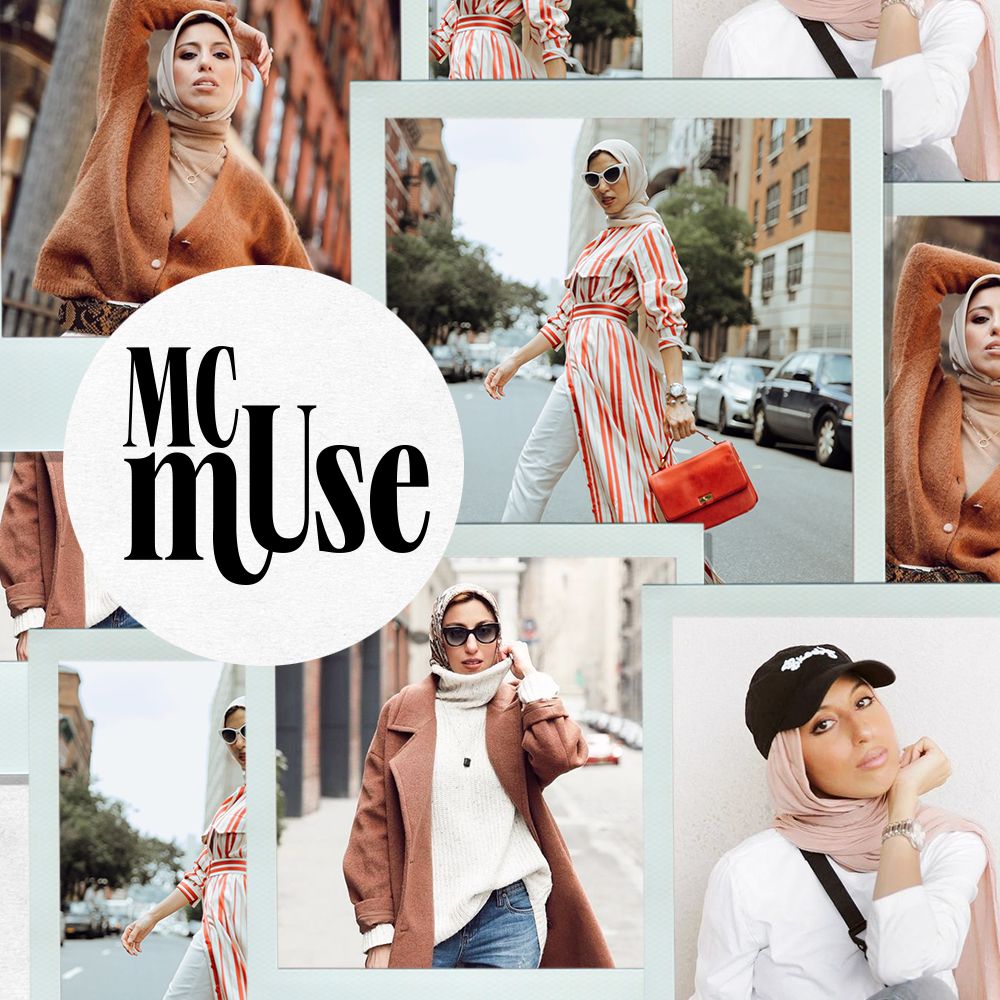 Melanie Elturk’s Bold Approach to Modest Fashion
Melanie Elturk’s Bold Approach to Modest FashionThe CEO of Haute Hijab is taking her company global while never losing sight of the issues that matter to Muslim women here at home.
By Sara Holzman Published